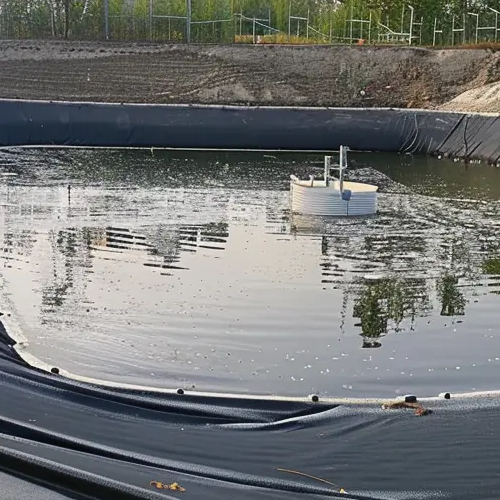
Why Use HDPE Geomembranes?
2025-04-16 15:00
Chemical Resistance
Containment applications often involve exposure to a wide array of potentially aggressive substances. HDPE geomembranes exhibit outstanding resistance to this chemical attack, maintaining their structural integrity and impermeability even when in contact with corrosive materials over long periods.
UV Resistance
Many geomembrane applications involve exposure to sunlight, either during installation or throughout the service life of the facility (e.g., pond liners, canal liners).
Weldability
Creating a large-scale, impermeable barrier requires joining individual panels of geomembrane together securely. HDPE offers excellent weldability using thermal fusion techniques (such as hot wedge or extrusion welding).
Versatility
The combination of durability, impermeability, and resistance properties makes HDPE geomembranes incredibly versatile. Their application spans numerous sectors:
Waste Management: Landfill base liners, caps, and leachate collection ponds.
Mining: Heap leach pads, tailings dams, process water ponds.
Water Management: Reservoir liners, canal liners, potable water containment, decorative ponds.
Wastewater Treatment: Aeration lagoons, sludge ponds, secondary containment.
Agriculture & Aquaculture: Irrigation ponds, fish farm liners, manure lagoons.
Civil Engineering: Tunnel linings, foundation waterproofing.
Whether you need an hdpe smooth geomembrane liner for general lining or an hdpe textured geomembrane for applications requiring increased friction on slopes, there's an HDPE solution available.
Cost-Effective
While the initial material cost of an hdpe smooth geomembrane liner might sometimes be compared to other options, its long-term value proposition is outstanding. Factors contributing to its cost-effectiveness include:
Long Lifespan: Reduces the need for frequent replacement or major repairs.
Low Maintenance: Requires minimal upkeep once properly installed.
Environmental Protection: Prevents costly contamination cleanup and potential regulatory fines.
Installation Efficiency: Relative ease of installation can reduce labor costs compared to complex alternatives.
Considering the total lifecycle cost and the high stakes involved in containment failure, HDPE often represents the most economical and reliable choice.
Environmental Protection
Perhaps the most critical benefit is the role HDPE geomembranes play in safeguarding the environment. By creating effective barriers, they prevent harmful pollutants from contaminating soil and vital groundwater resources. This is essential for regulatory compliance and responsible stewardship of natural resources.
Conclusion: Secure Your Project with HDPE Geomembranes.
Frequently Asked Questions (FAQs)
1. How long do HDPE geomembranes actually last?
Answer: When properly specified for the application and installed according to industry standards, high-quality HDPE geomembranes have a proven service life often exceeding 50 years.
2. Are HDPE geomembranes suitable for containing aggressive chemicals?
Answer: Yes, one of the key strengths of HDPE geomembranes is their excellent resistance to a broad spectrum of chemicals, including acids, bases, salts, oils, and many industrial solvents commonly found in landfill leachate, mining solutions, and wastewater.
3. Is HDPE geomembrane expensive compared to other lining options?
Answer: While the initial material cost might be higher than some basic alternatives, HDPE geomembranes are highly cost-effective when considering the total project lifecycle.









